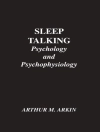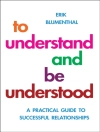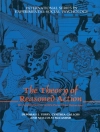How do I implement effective strategies for treating traumatic stress in this particular child or adolescent?
Clinical Exercises for Treating Traumatic Stress in Children and Adolescents combines guidance for personalizing and implementing effective treatment approaches with practical materials to use in session. It describes the potential impact of trauma on children and adolescents, outlines core principles of effective treatment models, and provides practical guidance for tailoring treatment strategies to the specific needs of the individual. The featured worksheets and practical resources are designed to be compatible with evidence-based treatment models including Trauma-Focused Cognitive Behavioral Therapy (TF-CBT), Prolonged Exposure, Attachment, Self-Regulation and Competence (ARC), and Child-Parent Psychotherapy (CPP).
Replete with adaptable, ready-made materials, this convenient resource will help any clinician working with trauma exposed 8-18-year-olds to implement effective treatment strategies in practice, as well as to take a tailored approach that engages them with creative, therapeutic activities.
Cuprins
Part I. Getting Started. 1. What is Trauma Work? 2. Evidence-Based Models. 3. How to Use this Workbook. 4. Making a Problem List and Monitoring Progress. Part II. Preparing Children for Trauma Work. 5. Enhancing Social and Personal Resources. 6. What is Trauma and How Does it Affect Us? 7. How Will Psychotherapy Help? 8. Regulating Intense Emotion from the Bottom Up. 9. Regulating Intense Emotion from the Top Down. 10. Making Healthy Lifestyle Choices. 11. Emotional Vocabulary and Awareness. 12. Tolerating Trauma Work. Part III. Trauma Work with the Child. 13. Starting the Trauma Work. 14. Indirect Therapeutic Exposure. 15. Low-Level Therapeutic Exposure. 16. High-Level Therapeutic Exposure. 17. Trauma Memory Processing. 18. In-Vivo Exposure. Part IV. Working with the Caregiver. 19. What Does the Caregiver Bring to the Table? 20. What is Trauma and How Does it Affect My Child? 21. How Will Psychotherapy Help My Child? 22. Bringing it Home. 23. Managing Difficult Behavior. 24. Engaging Families with Barriers to Treatment. 25. Additional Resources. Worksheets and Handouts.
Despre autor
Damion J. Grasso, Ph D., is an Assistant Professor of Psychiatry and Pediatrics at the University of Connecticut School of Medicine, USA. He has worked extensively in the area of early trauma exposure and child development, with research focusing on the assessment and treatment of trauma-related problems in children and adolescents.












